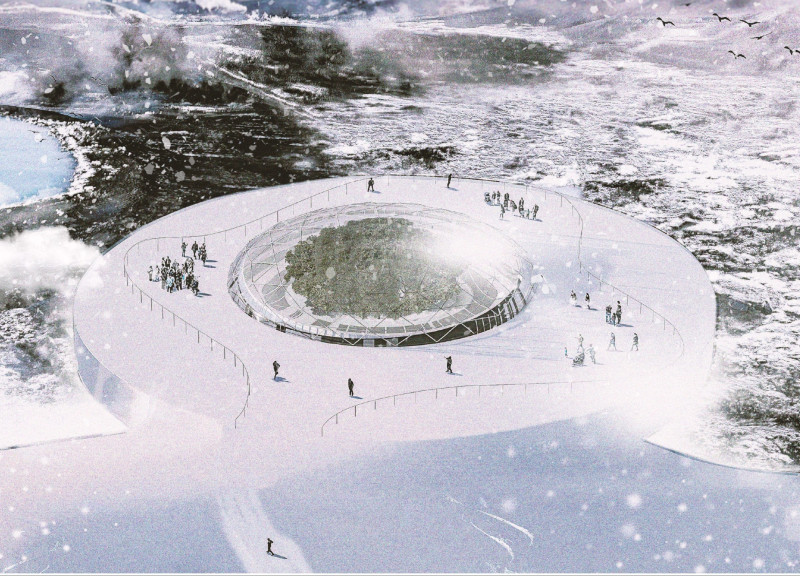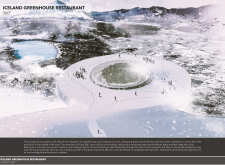5 key facts about this project
The Iceland Greenhouse Restaurant combines a dining establishment with a greenhouse, creating a unique space that highlights its natural setting. Located near the Myvatn Nature Baths in Iceland, the design provides stunning views that connect diners to the surrounding landscape. By blending these two functions, the restaurant enhances the dining experience while promoting sustainable practices.
Design Concept
The design features a pathway that guides visitors from the roof down to the restaurant area. This pathway, formed by a gradual ramp, encourages people to explore as they move through the space. Visitors can easily transition between the dining area and the greenhouse, fostering a sense of interaction with both elements. The layout transforms the dining experience, allowing guests to appreciate not just their meals but also the environment around them.
Thermal System
Inside the greenhouse, a radiant floor heating system maintains a comfortable temperature of 25°C. This system draws on geothermal energy, using heat from the earth. An extraction boiler and a carefully designed HVAC system work together to keep the air fresh and warm while ensuring that energy is used efficiently. Such thoughtful planning reflects a commitment to sustainability, minimizing energy waste.
Materials and Structure
The building incorporates materials essential for both durability and comfort. Concrete forms the main structure, providing strength and stability. A waterproofing layer protects the building from weather conditions, while insulation helps maintain a stable internal temperature. Double-layered glass allows for clear views of the landscape while enhancing energy efficiency. Specialized floor finishes ensure practicality in both the dining spaces and greenhouse areas.
The greenhouse not only supplies fresh ingredients for the restaurant but also invites visitors to engage with the living environment. This connection helps diners appreciate the local ecosystem, making each meal a part of a larger experience that celebrates the beauty of nature.






















































